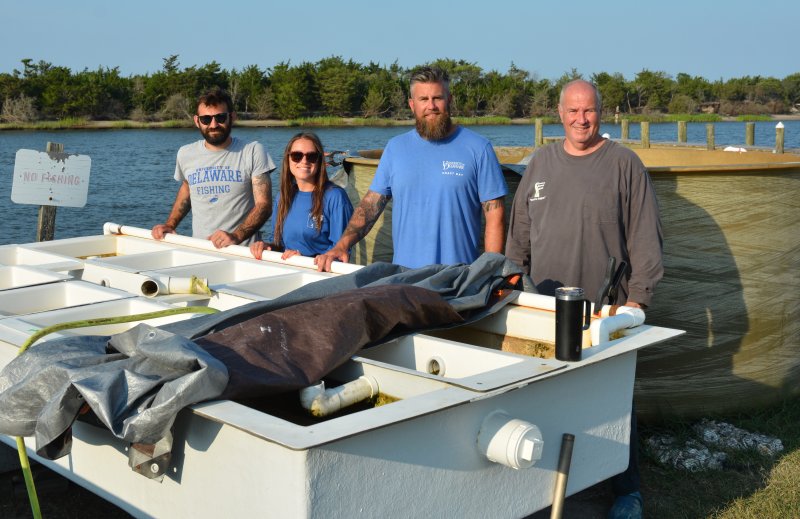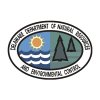UD aquaculture program moves from oysters to clams
Like an oyster slowly growing in Rehoboth Bay, the state’s aquaculture program continues to make slow, steady progress toward becoming a full-fledged industry. The most recent step was the transfer of baby hard clams from a University of Delaware hatchery in Lewes to a Rehoboth Bay aquaculturist from Millsboro.
It means there can now be two products produced in the same foot of sand, said Ed Hale on a late-July evening.
Hale is a faculty member with Delaware Sea Grant’s fisheries and aquaculture extension. He’s also an assistant professor in the University of Delaware’s School of Marine Science and Policy. He oversaw the construction and then implementation of a shellfish hatchery on Pilottown Road in Lewes. The small, one-story cinderblock building is located next to the Marine Education, Research and Rehabilitation Institute facility, immediately adjacent to the Lewes-Rehoboth Canal.
The introduction of hard clams helps provide a level of certainty for aquaculturists that wasn’t there before, because if something happens to one crop, there’s still the opportunity to harvest the other, said Hale.
In an effort to revitalize the environment and the industry, legislation was signed into law in August 2013, creating a commercial shellfish aquaculture industry in the Inland Bays. Leasing activity began in 2017 in Indian River, Rehoboth and Little Assawoman bays. In early 2018, the first aquaculturists put cages in the water. The Lewes-area hatchery was built in 2022, and there were oysters being spawned a year later. In 2024, the hatchery produced enough oyster seed to provide commercial aquaculturists with some. Last year, the Shellfish Aquaculture Task Force made recommendations on changes to the industry, which were put in place by state legislators this past legislative session.
Delaware Cultured Seafood's Mark Casey, who is also Delaware Aquaculture Association president, received the hatchery’s clams. Casey thanked the task force for the work done last summer in preparation for the legislative session this past winter. It’s great to finally be able to put hard clams back in Rehoboth Bay, he said.
It helps because now a farmer can grow two crops in the same space – oysters floating in the water, clams in the sand, said Casey. It will also help in the fight to build the industry, which is still trying to find farmers, he said.
Beyond helping the industry, Casey pointed to environmental benefits of introducing the clams back into Rehoboth Bay. Pointing to all the people in the bay during the summer months, he said, it’s another bivalve in the water, which will in turn alter the water quality of the bay for the good.
In addition to water quality, Hale said the cages in the water provide habitat for small fish and animals. It’s known the cages are an ecological refuge, he said.
There’s a difference in the spawning processes of oysters and clams, explained Alyssa Campbell, Delaware Sea Grant’s Fisheries and Aquaculture Laboratory coordinator, who has been at the hatchery since it hatched a couple of years ago.
Oysters are easy, because all that needs to be done is scraping the male and female gonads, and then mixing them together, said Campbell. With the clams, that’s not possible, so they’re induced with serotonin, she said.
In addition to the spawning process, there’s a difference in how the two bivalves grow. The baby oysters – called spat – are set to structures and grow, while the baby hard clams aren’t set to anything, said Campbell. They’re introduced to the sediment and then left to do their thing, she said.
Looking forward, Casey already has plans for his new clams.
Hopefully, a year from now, there will be a party and there will oysters and clams grown from Rehoboth Bay at it, said Casey.
Chris Flood has been working for the Cape Gazette since early 2014. He currently covers Rehoboth Beach and Henlopen Acres, but has also covered Dewey Beach and the state government. He covers environmental stories, business stories and random stories on subjects he finds interesting, and he also writes a column called Choppin’ Wood that runs every other week. He’s a graduate of the University of Maine and the Landing School of Boat Building & Design.






















































